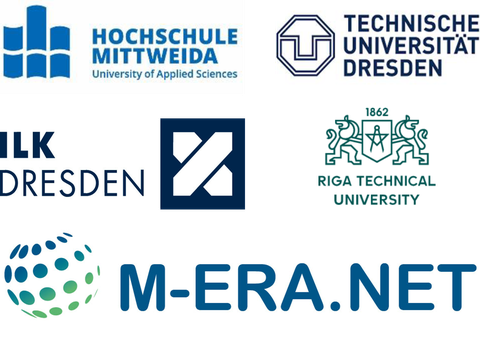MULTI-SCALE LASER SURFACE TEXTURING FOR LOW ICE-FRICTION CONTACTS (M-LUGE)
Promoter: Sächsische Aufbaubank (SAB), Sächsisches Staatsministerium für Wissenschaft, Kultur und Tourismus
Cooperation partners: Laserinstitut Hochschule Mittweida, Technische Universität Dresden, Riga Technical University, Institut für Luft- und Kältetechnik GmbH, Sporta un interešu klubs RO
Current time: 01.11.22 – 31.07.25
Recent developments in sliding on ice identified that the ice-friction coefficient is influenced by the topography within the contact area. This opens the door to design surfaces with different contact feature sizes and shapes in order to tailor and control sliding on ice functionality. Moreover, enhanced ice-friction performance by the reduction of the ice-friction coefficient in metal/ice contacts would be a welcome innovation with great potential to be applied in modern surface engineering. Therefore, in the project M-LUGE, three university partners from Laserinstitut Hochschule Mittweida, Dresden University of Technology and Riga Technical University have teamed up with two partners from potential application fields, Institut für Luft- und Kältetechnik GmbH and Sporta un interešu klubs RO to develop a clean, flexible and environmentally friendly laser-based surface texturing technology for the energy-efficient production of multi-scale surface textures consisting of microscopic features within a broad range from 200 nm to 100 μm scale level. The laser-made surface features will be tested and further functionally enhanced with the ultimate goal to achieve low ice-friction and anti-icing functionality in metal on ice contacts.
The novelty of M-LUGE is to combine different laser micro machining technologies - laser engraving with Direct Laser Interference Patterning and fractal-like feature production - for the first time in a hybrid laser process to provide a broad range of microscopic feature sizes. Specifically, in M-LUGE, a relationship between feature dimension and ice-friction coefficient will be established in order to identify and categorize optimized feature dimensions for specific ice-friction functionality and anti-icing performance in frozen environments up to -60°C. This research provides new insights onto ice-friction and is valuable to determine reliable, long-term stable feature dimensions for greatest reduction of ice-friction. The candidate surface features for low ice-friction performance will be scaled-up to large areas by using high-speed laser technologies and will then be machined on functional parts of real-life products.
 © Bogdan Voisiat
© Bogdan Voisiat
Mr Fabian René Ränke
Dipl.-Ing.
Send encrypted email via the SecureMail portal (for TUD external users only).


